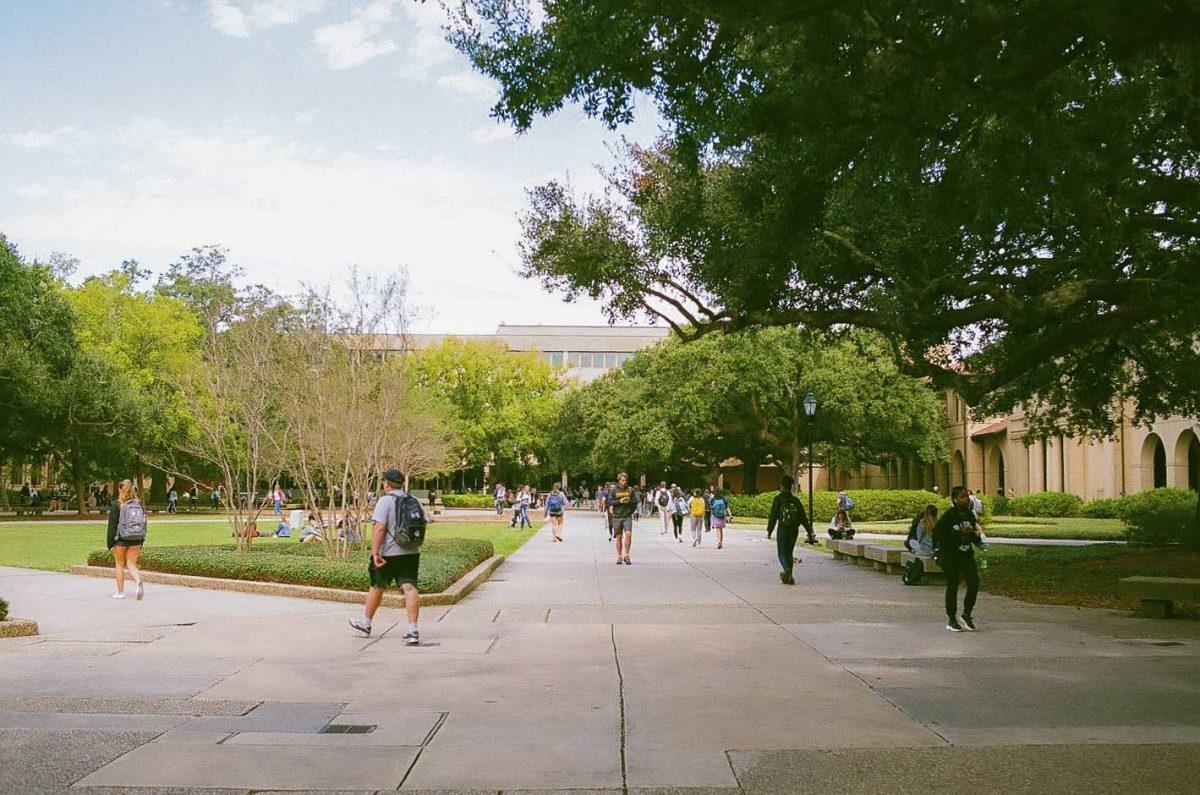LSU’s Office of Diversity, Equity and Inclusion released their 2020-2022 Roadmap to Diversity and Inclusion in June, outlining various ways to increase diversity and inclusion at LSU.
Months after the ODEI released the roadmap, LSU students and faculty reflected on how the University has progressed in light of nationwide social unrest, a resurgence of the Black Lives Matter movement and record numbers of students from underrepresented groups at LSU.
Vice Provost for Diversity Dereck Rovaris Sr. said the ODEI’s Roadmap Steering Committee began working on the roadmap in August 2019.
“We know that LSU is becoming much more diverse every single freshman class that comes in,” Rovaris said. “The Provost and I recognized that if we’re going to bring these students in, we’ve got to make sure they have an experience that’s fully enriched and fully included. We can’t just say we brought in a bunch of students and we didn’t do anything.”
In the last 10 years, the University has seen enrollment of Black students increase 87 percent, with 5,028 Black students enrolled at LSU in the fall of 2020. Hispanic student enrollment grew at a more pronounced rate, with a 130% increase to 2,490 students.
The Insight to Diversity Magazine awarded LSU with the Higher Education Excellence in Diversity award in 2020, denoting LSU’s “outstanding commitment to diversity and inclusion.”
Rovaris said that the upper administration at LSU understands the importance of allocating resources to diversity and inclusion programs and the real barrier of meeting the goals of the roadmap is resources.
“That’s the beauty of being here at LSU is that the upper administration, our board of supervisors– we all get it,” Rovaris said. “I don’t have to teach. A lot of my colleagues that have my job say at Oregon or Michigan or other places– they have to teach that.”
Rovaris said the real problem the University faces is resources.
“We’re working on identifying those resources,” Rovaris said. “In the past, it was ‘We don’t have enough money Dereck, we can’t do that.’ Now it’s ‘We’ve got to find that money, because we need to do this.’”
The roadmap’s faculty section suggests initiatives and methods for better recruitment and retention of faculty of color at LSU, an area Rovaris said needs improvement.
LSU P.h.D. student and Black Male Leadership Initiative coordinator Franklin Soares stressed the importance of increasing faculty diversity.
“If we’re going to increase more students on campus who are Black, Asian, things like that, we need more faculty and staff that look like that too,” Soares said. “Research shows that if minority students have people that look like them, they’re more likely to be retained and graduate from a place like LSU that is a mostly white environment.”
Soares is completing his P.h.D. in higher education administration. His research focuses on what factors contribute to the matriculation of Black students at predominantly white colleges and universities in the South.
Construction management graduate student Shashank Muley, vice president of LSU’s International Student Association, said that his experience as an international student at LSU has been an overall positive experience and that the administration has done well at creating a welcoming environment for students such as himself.
“It’s always good to have a dialogue with administrators instead of sidelining them,” Muley said. “Now that we have many international students in LSU student government, it’s much easier for us to voice our concerns to the administration than it was before.”
Political science and history sophomore Carter Smith said that for LGBTQ students, the University and student population could do more to create a more welcoming environment.
“I think we’re trying to do better,” Smith said. “We do have a couple clubs on campus but the atmosphere around LGBTQ people at LSU is not good. I wouldn’t say that it’s dangerous because it’s not directly that but it’s not very welcoming for LGBTQ students and I think that’s just because the atmosphere of the University and of students at the University.”
“I luckily have not experienced a lot of that but I know a lot of people that I lived with last year and that I’m friends with have experienced a lot of hate because of their appearance or because they ‘look gay,’ or ‘look trans.’
“It just really depends on who you’re around and how you act because it’s not generally a safe space for all LGBTQ people. It can not be the safest environment, you have to be careful,” Smith said.
Rovaris said there is work to be done in regard to inclusion on campus. He is confident that just as the country has increased in people of color over the last few decades, that increase will continue in the next 20 to 30 years.
“So if we’re not paying attention to those folks from underrepresented groups, we’re going to miss out on people who can teach, people who can be lawyers, people who can be journalists,” Rovaris said. “A good number of those folks are going to come from these groups of underrepresented people. If we don’t teach them and train them now, we’re gonna be left behind.”





